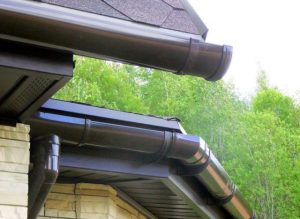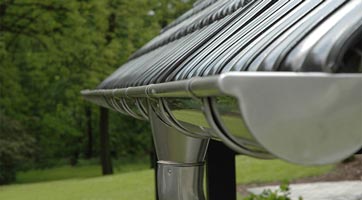
Climate changes in recent years are expressed in critical temperature drops in winter and summer, an abnormally large amount of precipitation falling in a relatively short time. All this affects the rate of wear of the walls of the building, its roof and, in particular, the drain. In winter, ice can freeze on the gutters; during a thaw, the convergence of wet heavy snow from the roof can bend the structure or even bring it down. Icicles can fall on people and injure them. In order to prevent the above-described negative consequences, a gutter heating or an anti-icing system (ASK) is installed.
Frost protection for gutters
Extremely low temperatures are not observed in our latitudes, but it happens that a lot of snowfalls per day, after a few days a plus temperature is established during the day and a slight minus at night. As a natural result, an ice “plug” forms in the gutter, water overflows over the top and eventually solidifies in the form of icicles. Yes, modern gutters are designed for moderate loads, with proper installation they will last for many years, but the formation of icicles can lead to the following problems:
- reduced service life due to the heavy load on the system fasteners;
- break the gutter under the mass of snow and ice;
- it is often impossible to remove icicles without scratching the system elements.
By installing the anti-icing system on the gutter, you can avoid the problem of ice and icicles and extend the life of the gutter system, since ice will not form on the components at all. Also, there will be no need to remove icicles so that they do not injure people living in the house.
Disadvantages of the gutter heating system

Basically, defects in the operation of the anti-icing system are associated with errors in design and assembly. As a result, the cables may be short-circuited, or there may not be enough power and ice will still form.
Someone can be stopped by the considerable cost of such a system, especially if you install a self-regulating cable…..
Read more in Russian or Ukraine




